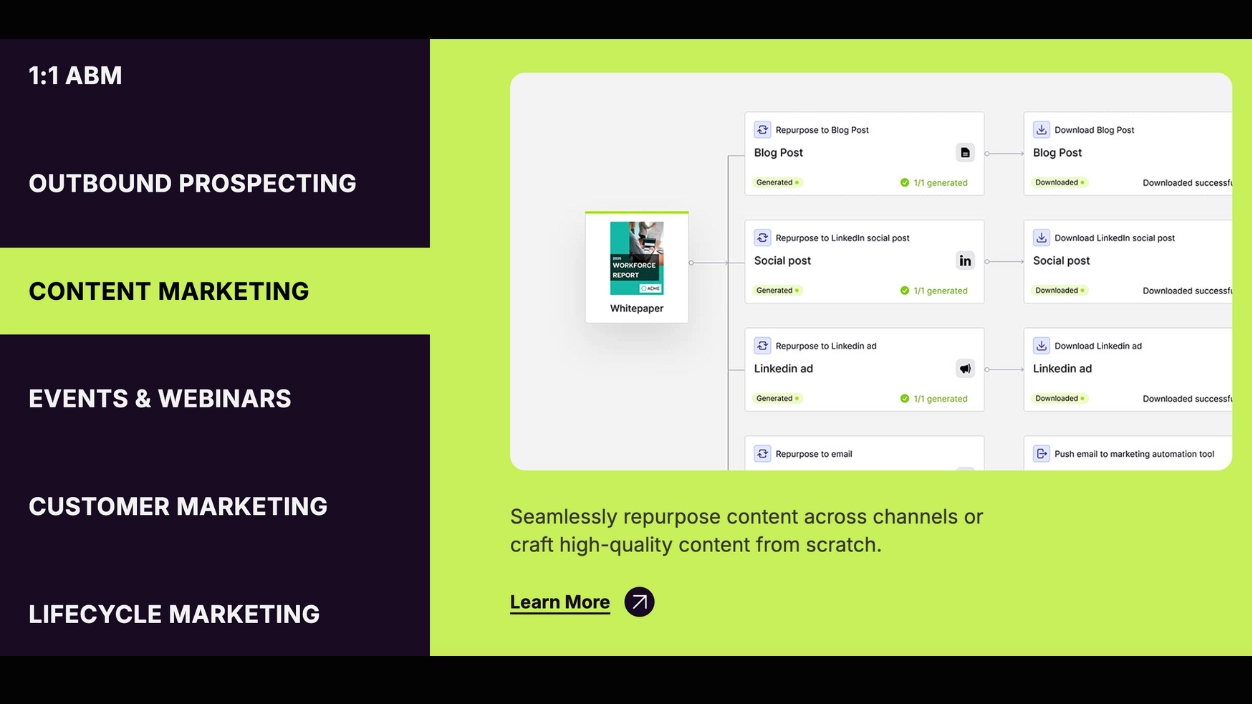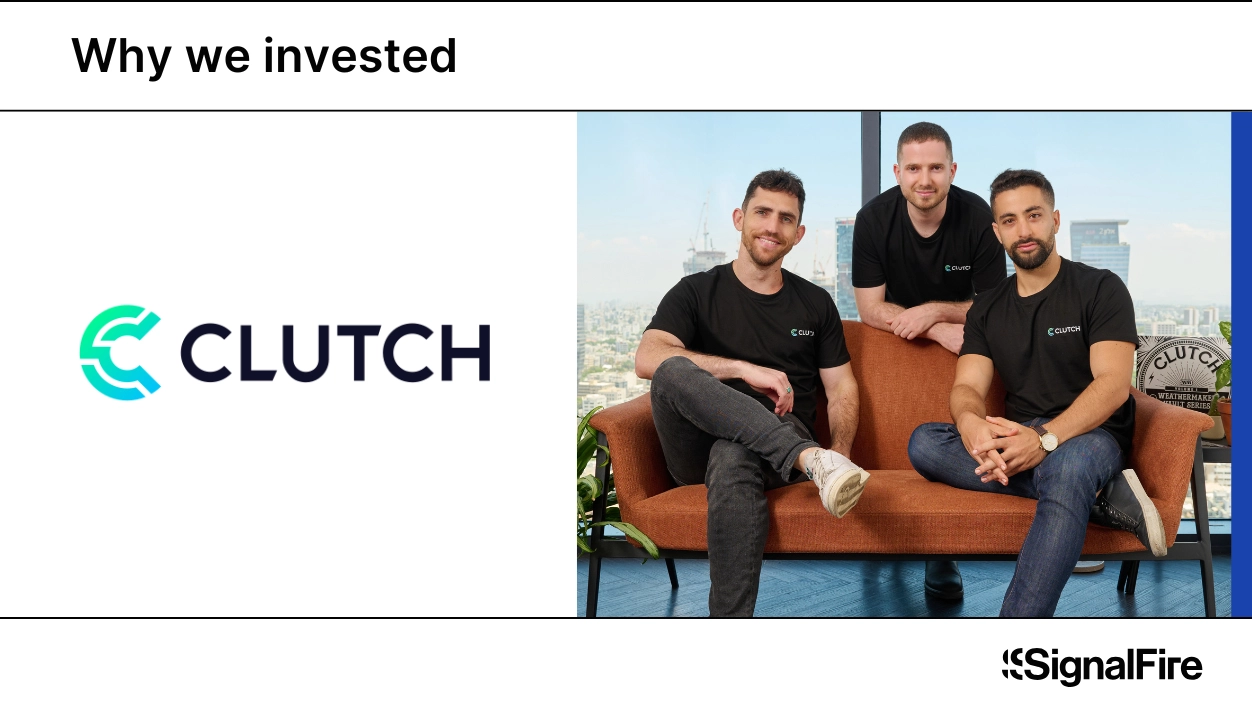
The biggest problems can't be solved alone. Yet by equipping armies of experts with the tools they need, startups can increase their impact and their revenue with remarkable speed.
This is the potential of the "business-in-a-box” model, now supercharged with AI. By providing comprehensive platforms that take care of everything from operations to marketing, these startups empower on-the-ground providers to focus on what they do best.
How can founders successfully apply this approach to their companies? We asked Jake Cooper, the CEO of Grow Therapy, which is a business-in-a-box for therapists. In just four years, it's powered more than 3 million patient visits and recently raised an $88 million Series C from Sequoia and SignalFire.
In this article, we'll walk through how business-in-a-box startups can:
- Focus on solving one stakeholder's problems first to build trust and expand from there
- Prioritize ruthlessly to maintain service quality while scaling quickly
- Leverage technology to improve care delivery and provider efficiency
- Build strong payor relationships by addressing access, quality, and triage needs
Selecting the right initial business to box up
The mental healthcare industry has been ripe for disruption, with 55% of U.S. counties lacking licensed behavioral therapists for children. Meanwhile, the percentage of Americans experiencing symptoms of anxiety or depression has tripled since the pandemic started.
Cooper was inspired to found Grow Therapy after witnessing the problems facing mental health providers and patients alike. "We started Grow midway through the pandemic, really for three purposes," Cooper explains.* "One, to empower providers to achieve their professional aspirations through independent practice. Two, to massively expand access to affordable mental health care through insurance acceptance. And three, to really elevate the quality of mental health care through both technology and clinical support."
Cooper's personal struggle to find an in-network therapist, combined with his co-founder's desire to run a private practice despite daunting barriers, highlighted the need for a platform that could remove friction between payors, providers, and patients.
That led to Grow’s robust platform for therapists that handles insurance contracting, billing, scheduling, note-taking, and patient acquisition through its demand gen partnerships and AI-powered matching system. Now Grow Therapy powers the practices of more than 12,000 providers supported by partnerships with more than 75 payors so patients get their therapy paid for.
As more founders explore opportunities to apply this business-in-a-box playbook, here are some characteristics to look for when choosing a vertical:
- Services where access is limited, but can be expanded dramatically through virtual care, like therapy over a video call, such that there are fewer real-world logistics to manage. For Grow, many patients actually prefer not having to visit a public waiting room or talk face-to-face IRL.
- A fragmented market with latent supply of frustrated talent, like therapists in group practices or huge hospital networks where administrative overhead taxes their take-home pay and they don’t have control of their schedule. Grow offered an attractive alternative where therapists could choose their hours and patients, while improving their earning potential.
- Strong incentives for payors, as mental health is an enormous cost driver with limited access and customers might switch to competitors if they can’t find therapy and get it covered by insurance. This lets Grow solve a major retention problem for payors while swiftly being reimbursed.
- Simple coordination of service, where you don’t have to align too many schedules and rely on third parties to make progress. Grow connects individual patients directly with therapists and doesn’t have to sync whole families (as with child-focused care) or too many specialists (like in some fields of health such as oncology).
- Low net promoter score, where there is deep dissatisfaction among patients and an opportunity to significantly improve the patient experience.
- A market that does not have any strong vertical software for the specialty and has enough whitespace where a differentiated platform can be built.
With behavioral health as an ideal market segment to target, Grow next needed to understand therapy’s biggest challenges.
Building trust through focused problem-solving
If you’re serving multiple sides of a market, where do you start?
"We knew our stakeholders were always going to be providers, patients, and payors," Cooper notes. "So, which stakeholder do you engage first? And how do you engage them before you have the other stakeholders already at the table, let alone a technology platform that's really operating at the potential of what it could be?"
Grow Therapy chose to focus initially on therapists who provide care, forming direct relationships and solving their most pressing problems. It’s easier to wedge into relationships with individuals rather than monolithic organizations, and they’re who Grow’s most bespoke software would be built for. Grow used ads and job postings to validate therapists’ desire for tools to launch their own practice, and when 50 applied its first day, the founders quit their jobs and medical school to go all-in. And with the trust of therapists, Grow gained legitimacy with other stakeholders.
Scaling with quality: The art of prioritization
Business-in-a-box startups undertake a duty to their customers who rely on them to earn a living. And in healthcare, where glitches can seriously impact patients’ lives, the responsibility is even greater.
Cooper emphasizes the importance of ruthless prioritization: "You really do have to do all those things at least adequately to properly serve your stakeholders, let alone to provide exceptional service. So how do you do that? This is a bit of a platitude, but I think it often comes down to what you decide not to do—just ruthless prioritization."
Grow Therapy implemented several strategies to healthily manage its growth so it didn’t sacrifice quality for scale:
- Phased geographic expansion: "We have gone state by state. We were in Florida for the first year before we expanded into other states,” giving Grow time to ensure everything worked correctly.
- Focused provider archetype: "We haven't expanded beyond serving our core, independent provider architect. We don't serve group practices right now,” constraining the feature set that it needs to build.
- Specialization boundaries: "We haven't expanded beyond general mental health care.” Grow has referral relationships with providers who specialize in eating disorders and other conditions so patients always get the help they need, but it chose a large enough core market to avoid the need to diversify too soon.
Business-in-a-box startups are complicated enough already. As SignalFire partner Wayne Hu notes, Grow had to operate as a multisided marketplace—an operations-heavy business with revenue cycle management and billing as a healthcare company—and ran a heavyweight enterprise sales motion to add payors.
By clearly defining what not to do, Grow Therapy has been able to maintain quality while building quickly. Cooper insists “any success we've had has been a testament to our team. We have 330 incredible teammates that we work with.”
Leveraging technology to elevate care
Providing the best technology to partners requires careful decisions about when to build in-house or buy off-the-shelf software. Building is slower and more expensive at first, but it gives you full control over product quality, direction, and pace of iteration.
For Grow, building its own proprietary electronic health record (EHR) was the right choice. "It was one of the best decisions that we've made at Grow,” Cooper says. "The purpose of an MSO [managed service organization] is to be best-in-class infrastructure to support and elevate care delivery. It's pretty challenging to do that without the center of care delivery, which is an EHR. You find yourself bumping into a ceiling with respect to your ability to evolve your architecture if you don't own the critical heart of the infrastructure.”
Each vertical has different levels of complexity, though, so founders need to assess whether they have the product chops and funding to build from the start. “It was easier for us to do it than it would be for someone in primary care, where instead of 13 CPT codes on the therapy side and 20-odd ones on the psychiatry side, you have 100.” Biting off too much could have delayed revenue and made it harder to raise capital.
SignalFire is engineered to help business-in-a-box startup founders navigate all these decisions and challenges. From investing in Grow since its Series A through its recent $88M Series C round and medspa business-in-a-box startup Moxie, we’ve developed playbooks and connections to accelerate your growth alongside our Health and PharmaTech practice. We also offer portfolio founders our Beacon AI platform with talent intelligence to accelerate hiring recruiting and customer intelligence to accelerate go-to-market, in-house experts like the former CMO of Stripe and Chief Talent Officer of Netflix, and industry-leading advisors in healthcare that can open doors for customers.
If you missed our event showcasing Grow Therapy’s playbook, feel free to watch the recording here and register for our next event on Moxie’s playbook here.
* Portfolio company founders have not received any direct compensation for this feedback. These founders may or may not serve as Affiliate Advisors, Retained Advisors, or consultants to provide their expertise on a formal or ad hoc basis. They are not employed by SignalFire and do not provide investment advisory services to clients on behalf of SignalFire. They may or may not have made a personal investment into a SignalFire fund.
*Portfolio company founders listed above have not received any compensation for this feedback and may or may not have invested in a SignalFire fund. These founders may or may not serve as Affiliate Advisors, Retained Advisors, or consultants to provide their expertise on a formal or ad hoc basis. They are not employed by SignalFire and do not provide investment advisory services to clients on behalf of SignalFire. Please refer to our disclosures page for additional disclosures.
Related posts

Why we’re continuing to invest in Tofu’s vision - Reducing martech bloat for GTM teams

Justpoint raises $95M to tackle the toxic exposure epidemic with AI




.png)